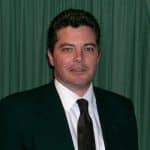Argentine Stem Weevil Lifecycle Predictor.
This is a free Argentine stem weevil Predictor. It will always remain free and we hope in time will become a valuable resource for turf managers in Australia.
Tools like this allow turf managers to get better results when they try to manage this pest.
- You can use this to estimate the seasonal development and damage risk from the Argentine Stem Weevil (Listronotus bonariensis) in Australia.
- The new Argentine stem weevil insecticide, Curatol, can be more effectively targeted.
- You can save money by using less insecticide more effectively.
- Tools like this help us reduce chemical use and and slow down the development of insecticide resistance.
It uses daily temperature data and real-time degree-day accumulation to estimate how this insect progresses through its biological stages. It takes into account all stages from egg laying to adult emergence, and then predicts the timing of high-risk feeding periods.
The climate data should be loaded as a csv file with these headings:
| Date | Tmax | Tmin |
How Can you Help?
What we need is your help to develop and perfect this tool. We need you to keep your eyes open for any stem weevil activity. When you do see any please contact us and we can see where we are up to in comparison to the model. Our email.
At this stage our focus is on Canberra. However, if you are elsewhere and you see activity please feel free to contact us. We can also use this information when to further validate this model in other areas.
What the Argentine Stem Weevil Predictor Model Does.
The predictor calculates cumulative degree-days above a biological base temperature of 10 °C.
By integrating these temperature heat units with this species’ known developmental thresholds, it identifies the expected time for
- Egg hatch and early larval feeding inside grass tillers.
- Peak larval activity and internal tiller damage.
- Soil based pre-pupal and pupal development.
- Adult emergence and the potential for oviposition of the next generation.
The model resets after approximately 484 degree-days. This represents a complete egg-to-adult life cycle, and can indicate whether you can expect one, two, or partial third generations in a growing season.
Why It Matters.
Argentine Stem Weevil is a key pest of cool-season turf in Australia. If we are able to predict its phenology it helps turf managers:
- Better time insecticide and biological treatments more precisely.
- Be able to anticipate damage risk windows when the larvae are actively feeding.
- Be able to better integrate cultural controls and monitoring to reduce the need for unnecessary treatments.
- Align management with seasonal temperature trends specific to the local climate.
Background on the Pest
- The weevil is native to South America but has become a major turf pest in New Zealand and parts of Australia.
- Adults are small grey-brown snout beetles that overwinter in crowns and leaf litter.
- They become active in the Spring when the mean daily temperatures exceed 10 °C.
- Eggs are laid in the sheath of grass tillers.
- The larvae hatch and then feed internally, destroying stems and reducing turf density.
- After they pupate in soil cells 5 to 6 mm below the surface, new adults emerge to continue the cycle.
When we combine field temperature records with degree-day modelling, tools like this predictor help to support evidence-based, temperature-driven pest management for professional turf managers.
Argentine Stem Weevil — Stage-based Degree-Day Model

Jerry Spencer
Jerry has an Hons Degree in Soil Science (1988) from Newcastle Upon Tyne University. He then worked as a turf agronomist for the Sports Turf Research Institute (STRI) until 1993.
He gained a Grad Dip in Business Management from UTS in 1999. He has held a number of technical roles for companies such as Arthur Yates (Commercial Technical Manager) and Paton Fertilizers (Organic, turf specialty and controlled release fertiliser) portfolios.
In 2013 he established Gilba Solutions as independent sports turf consultants and turf agronomists. Jerry has written over 100 articles and two books on a wide range of topics such as Turf Pesticides and turfgrass Nutrition which have been published in Australia and overseas.

